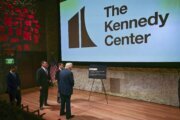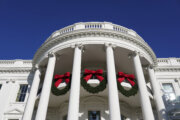SAN FRANCISCO (AP) — Digital maps that dodge traffic jams are saving time for millions of motorists, but they’re also turning some neighborhood streets into headache-inducing escape routes from congested highways.
The unsettling side effects of traffic-tackling technology are popping up more frequently as more drivers depend on smartphones equipped with navigation apps like Waze, Google Maps and Apple Maps.
Now, automakers are increasingly integrating those tools into dashboard consoles, making it likely that even more drivers will follow directions down roads that they otherwise would never have known.
“People are becoming trained to just blindly follow their mapping apps. The concern is the apps aren’t making any distinction between what happens when cars travel on highways and when they travel on city streets by schools and through neighborhoods,” says Hans Larsen, public works director in Fremont, California, a San Francisco Bay Area suburb on the fringes of Silicon Valley.
The traffic being diverted off clogged highways during the morning and evening commutes became so insufferable in Fremont that city leaders decided about a year ago to try to outwit the apps. The city of about 230,000 people started to ban turns at several key intersections at certain times along the shortcuts being touted by Waze and other mapping services.
Before police began handing out tickets, Fremont even set up electronic signs blinking this admonishment: “Don’t Trust Your Apps.”
The countermeasures turned the shortcuts into slower routes, no longer recommended as bypasses around traffic. But the apps have since found other shortcuts, including some that direct drivers down even smaller side streets that weren’t designed to accommodate so many cars. That’s frustrating some residents.
“Sometimes people get so focused on taking a shortcut that they won’t even stop to let other people back out of their driveways at home,” Larsen said.
Similar headaches are vexing communities across the country, prompting traffic planners to find ways to make their side streets less convenient alternatives to highways.
Waze, which Google bought for about $1 billion four years ago, originally set out to save every driver five minutes when they got into their cars to go anywhere beyond a few miles away. The app plots its routes with computer algorithms that analyze data gathered from users of Waze’s app. Waze recalculates the best routes based on real-time traffic conditions, updated roughly every three minutes.
The technology has become so accurate and widely used that Waze has broadened its mission to “eliminating congestion altogether,” says Waze spokeswoman Julie Mossler. “We can do that by providing smarter routes to drivers. We can’t snap our fingers and make traffic go away. Waze isn’t always going to be the solution, but it is certainly a key that helps.”
Cities need to do their part too, Mossler says. Waze says it works with municipalities to help them ease traffic on local roads, even when its app is steering cars on to them. Those steps can include lowering the speed limit, adding speed bumps or banning turns at some intersections to increase the chances that Waze won’t recommend them as shortcuts.
Waze has done a lot of good by reducing the amount of time that commuters spend on the road, which helps decrease air pollution, said Sam Schwartz, a transportation consultant and former traffic commissioner in New York City.
“But no good deed goes unpunished, so more and more communities are seeing more and more traffic because of the way these apps send drivers on to local streets,” he said.
Schwartz believes that cities facing technology-driven traffic problems will ultimately need to start charging tolls to use their roads during certain times of day. The congestion pricing would be similar to the system already used in some lanes on many California highways. Cameras could be used to identify cars and charge vehicles registered outside a city’s limit, Schwartz said.
In some cases, the shortcuts being recommended by Waze and other apps are also getting too congested. Christian Gunning of Encino, California, says he ignores some of Waze’s advice during peak commute times because he thinks the recommended route will feed into a bottleneck that the app hasn’t anticipated. But Gunning thinks he has an advantage over most other drivers because he has been commuting on southern California’s snarled freeways for more than a quarter century _ long enough to remember when he had to rely on paper maps to figure out a faster way around town.
“Finding the best shortcut around here once was like competitive sport, but Waze has sort of given everyone access to these routes,” says Gunning, 49. “So the elite athletes of commuting are losing any advantage that they once had. It is becoming a tragedy of the commons where so many people become mindless drones following a line on a map that everything gets flooded equally.”
Copyright © 2025 The Associated Press. All rights reserved. This material may not be published, broadcast, written or redistributed.







